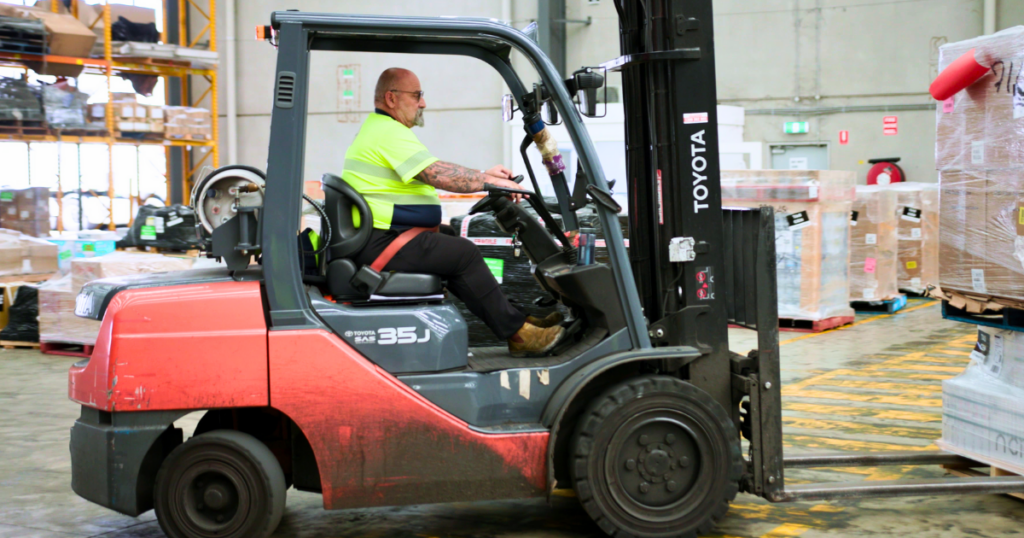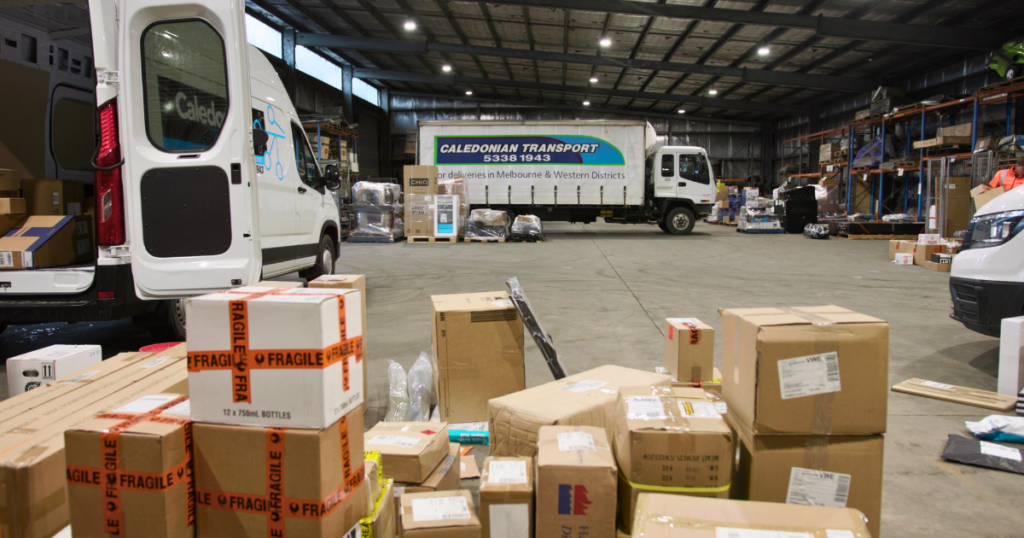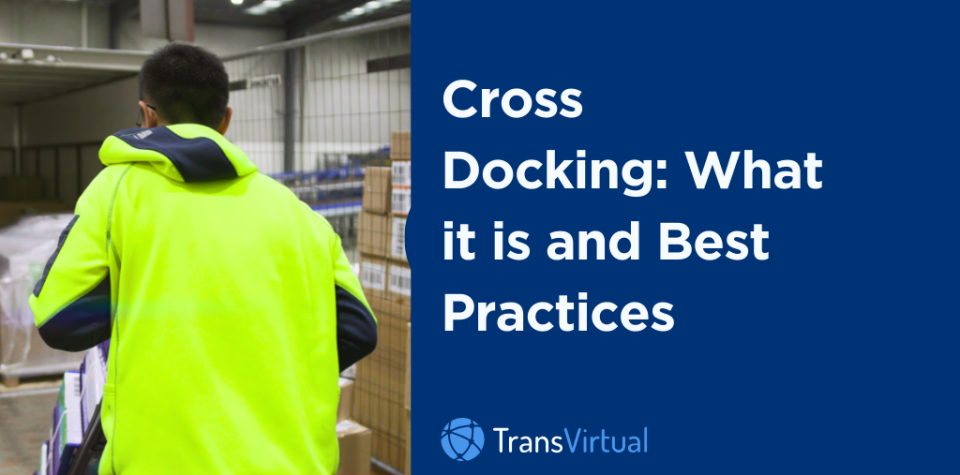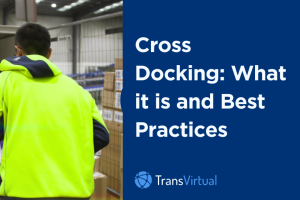Table of Contents
Cross docking is a popular strategy for maximising warehouse space and boosting customer satisfaction.
When done well, it ensures rapid delivery, reduces shipping costs, and lowers the risk of freight damage — all while giving you a good competitive advantage.
But here’s the caveat: While cross docking is great for supply chain management, you also risk losing goods, missing time windows, and incurring additional labor costs.
In this article, lets understand the benefits of cross docking and five tips to seamlessly implement the process in your supply chain management strategy.
What is Cross Docking?
Cross docking is the process of unloading inbound freight and loading it directly into an outbound shipment. This means that there’s little to no storage in between.
When operating on a cross docking model, distribution centers function essentially as a sorting centre rather than a warehouse or storage facility.
As soon as goods from an incoming vehicle arrives, they must be quickly unloaded and loaded directly on outbound trucks within 24 hours of arrival. In fact, the term “cross docking” refers to the movement of goods from inbound docks to outbound docks.
The main goal of the distribution centre is for goods to be directly transferred through the next stage of the supply chain. This means a cross docking facility must be highly organised in terms of transport and inventory management.
Benefits of Cross Docking
There are many key advantages of cross docking, particularly when it comes to supply chain efficiency:
-
Cross docking cuts the need for traditional warehousing rentals and warehouse storage costs.
-
Reduces inventory handling and inventory holding costs.
-
Lowers the risk of damage during transportation.
-
Outgoing shipments are quickly delivered to their final destination.
-
Allows for more flexibility when responding to customer demands.
Cross docking benefits a variety of industries, especially a businesses that deal with perishable items. Some examples include pharmaceutical companies, food and beverage, and groceries. Retailers also benefit from cross docking as it allows them to efficiently restock shelves and get items to their stores quickly.

Risks of Cross Docking
While cross docking reduces costs and frees up storage space, there are potential risks and challenges that come with it:
-
Cross docking can require significant planning, management, and maintenance.
-
You need highly visible, item-level tracking: Without proper checks and tracking in place, you could be vulnerable to shipment errors.
-
Transportation delays and supplier issues may disrupt your daily flow of goods.
-
With minimal handling, you risk running into supply chain issues such as stockouts, inaccurate demand forecasting, and quality control issues.
The most significant consideration, though, is that an automated management system becomes essential.
You’ll need to invest in a tool that provides automation, visibility for all inbound and outbound shipments, and fleet management to ensure timely deliveries.
Without this investment, you risk being too slow, losing freight and generally operating well under peak efficiency.
5 Tips for Better Cross Docking Operations

Okay, so how do you improve your cross docking operations? Let’s run through our five best tips.
1. Choose the most appropriate platform shape for your business
Cross docking facilities are generally designed in an “I” configuration (an elongated rectangle). This shape maximizes the number of inbound and outbound doors in the facility while also keeping the floor area to a minimum.
Research tells us that this shape is ideal if you have 150 doors or less, and if you have 150–200 doors, a “T” shape is more cost effective. For facilities with over 200 doors, the most ideal shape is an “X”.
2. Allow a significant amount of space for staging
Available space strongly affects the efficiency of your cross docking facility, even for smaller operations. You’ll have at least outgoing tr present for every shipment because of the short transition between inbound and outbound loads.
So that there’s minimal disruption, you need to make a significant amount of yard space available. This means that both inbound and outbound trailers will have enough space to stage properly.
3. Use conveyor systems to move products within your facility
We’ve established that freight must be constantly moved from a receiving dock to another in a cross docking model.
Carrying this movement out manually is neither the most efficient nor the safest method. Where possible, setting up conveyor belt systems will expedite your movement of freight from one dock to another.
Gravity rollers and other moveable conveyors are efficient options that don’t take up much space. These conveyor systems also help to reduce potential damage to your freight by lessening the amount of time it’s handled.
4. Leverage an automated management system
There’s no doubt about it, a cross docking operation has a lot of moving parts. You need to consider:
-
Receiving incoming shipments
-
Unloading the inbound shipments
-
Processing and sorting
-
Transition to outbound (the literal cross docking)
-
Preparation and loading into outbound vehicles
-
Coordinating logistics to ensure timely deliveries to their final destinations
Just one or two inefficiencies in this process can cause major delays or damage your freight. An automated management system will reassure you with optimal efficiency (and reduce damages). It also allows end to end visibility and communication across stakeholders.
We wrote a guide to implementing a TMS to help you decide what system is right for you, and learn how best to make the switch.
5. Keep your facility clean and organised
This one seems obvious, doesn’t it? But sometimes the most simple things are overlooked. Maintaining an uncluttered facility is vital to smooth cross docking.
Optimise Your Cross Docking Operation with TransVirtual
At the end of the day, the main goal of cross docking is to ensure customer satisfaction while cutting supply chain costs.
You don’t have to rely on outdated manual processes all the time. Automate processes, such as item-level tracking, order processing, and sorting to optimise the flow of goods across your cross docking facility.
Tools like TransVirtual also help facilitate real-time collaboration between supply chain partners and other stakeholders involved in the cross docking process.
That all said, has our guide to cross docking got you thinking about improving your facilities? We’d love to hear your thoughts. Get in touch or call for a chat today.
If there are any obstructions, your staff won’t move freight efficiently from one dock to the next. Allow time and design their workflows so that this transition space is cleared a few times every day.



